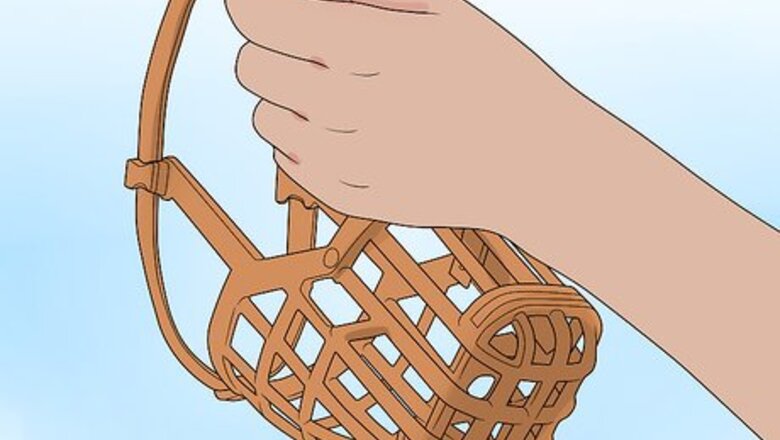
views
Getting the Right Muzzle
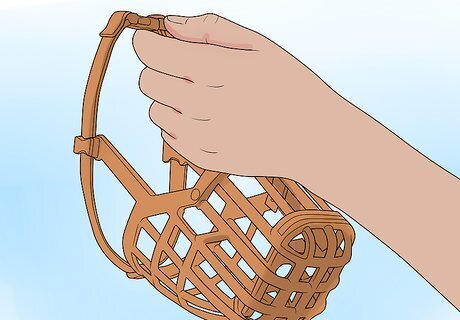
Choose a basket muzzle for basic training and exercise. There are a few different types of muzzles available on the market, but basket muzzles are the best option for most pet owners. Basket muzzles make your dog look a little bit like Hannibal Lecter, but don’t let that deter you. These muzzles are the most comfortable option available and work in any situation where your dog is physically active. They are made out of wire, plastic, or leather. Wire muzzles are the most effective at preventing bites. They work particularly well on large dogs like boxers and mastiffs. Plastic and leather muzzles fit well on smaller dogs like terriers and spaniels. Many people confuse head halters with basket muzzles. Head halters are walking leads for training. Halters do not prevent dogs from biting.
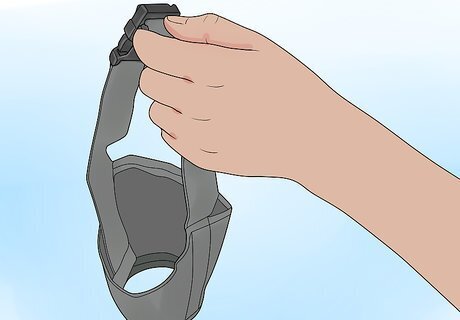
Pick a fabric muzzle for short-term events like grooming. Fabric muzzles look more comfortable than basket muzzles, but the opposite is true. This type of muzzle closes your dog’s mouth, preventing them from eating, drinking, and panting. Since this is dangerous, these muzzles must only be used under close supervision for short periods of time, about 30 minutes or less. Your dog regulates its temperature by panting, so never let it wear a fabric muzzle for a long period of time, especially in warm weather or after physical activity. This type of muzzle is most commonly used by vets and groomers. It’s a good option when you need to clip your dog’s nails, not when you're taking your dog out for a walk. Police muzzles look like an extra secure fabric muzzle. They are made for use on police dogs trained to attack on command. This kind of muzzle is unnecessary and not recommended for pets.
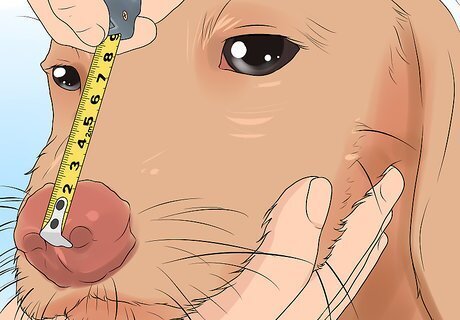
Measure your dog from the tip of its nose to its forehead. Once you know what kind of muzzle you need, figure out what muzzle size is a good fit for your dog. If you are able, use a tape measure to note the dimensions of your dog’s snout. Measure its length from the end to the spot where your dog’s muzzle starts to slope upwards towards its eyes. Taking measurements on some dogs is tough, but give it your best shot to get a good estimate.
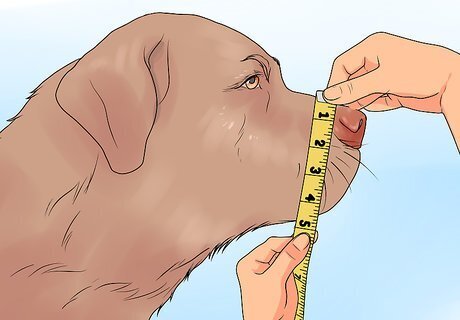
Find the circumference of the thickest part of your dog’s muzzle. Take the measurement at the end of the dog’s snout, right before its forehead. Wrap the tape loosely around your dog’s snout if it lets you. This measurement ensures you get a muzzle that fits your dog without chafing its skin. Be careful when taking measurements. To avoid bites, do this only with dogs you know well. Keep your face distant and stop if the dog growls or looks upset.
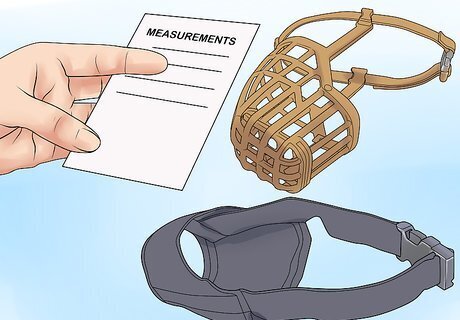
Use the measurements to choose a muzzle that fits your dog. Bring your measurements to a pet supply store or have them nearby while you shop online. Most retail stores have sizing guides available near the muzzles, which is especially helpful if you had a hard time measuring your dog’s snout. Ask sales associates for additional help. Vets, dog trainers, and other professionals are also helpful when choosing a muzzle. Ask them for advice on sizing a muzzle and muzzle training. Most manufacturers include sizing estimates with muzzles. Check the packaging for a general indication of what size of dog the muzzle is meant for.
Building a Positive Association
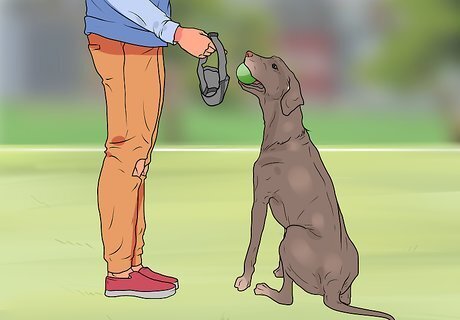
Introduce the muzzle by holding it while playing with your dog. The goal of muzzle training is to get the dog to associate the muzzle with fun times, like playing fetch or wrestling. Choose your dog’s favorite activity and get your treats ready. Hold the muzzle up briefly during the activity, then reward the dog for playing by giving it a treat. For example, if you choose fetch, hold the muzzle up when you throw the ball. Hide it behind your back as the dog retrieves the ball. Then, give them a treat and praise when they return. Praise your dog only while showing them the muzzle. That way, they associate praise with the muzzle. For dogs who have had negative past experiences with muzzles, doing a favorite activity first is important. It helps them overcome their fear. It can also help to introduce the muzzle when your dog is tired out, so they won't have as much energy to fight against it.
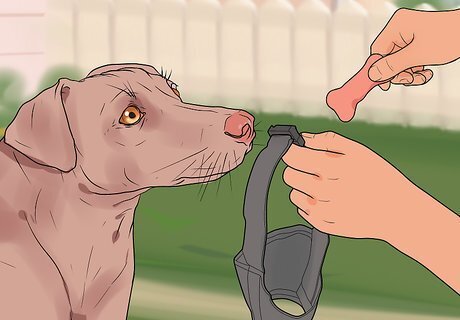
Let the dog get closer to the muzzle and reward them for their interest. Put the muzzle on a table or hold it in your hand. Any time your dog looks at it, sniffs it, or otherwise gets close to it, reward them. Give them a treat, verbal praise, or a click if your dog is clicker trained. Some dogs will be a little hesitant to approach. Let them come to the muzzle at their own speed. Meanwhile, continue showing them the muzzle during play sessions until they determine it isn’t a threat.

Use the muzzle as a treat dispenser to draw the dog closer. Hold the muzzle in your hand with the open end facing the ceiling. Put your dog’s favorite treats in the bottom of the muzzle so they have to stick their nose in to get a nibble. Some treats to try are cheese, chopped up hot dogs, cooked chicken, or anything else your dog loves to eat. Hold the muzzle steady in your hand. Avoid making any sudden movements and don’t try to push the muzzle onto the dog’s nose yet. As your dog gets more comfortable, try turning the training into a game. Hold the muzzle behind your back, then show it, holding it a few steps away from your dog. Let them run in and retrieve the treat inside.

Smear soft food onto the muzzle if the dog is too nervous to eat. Spread peanut butter or cream cheese inside the closed end of the muzzle. Freeze it briefly to solidify the spread. Afterward, try holding the muzzle out to your dog again. Let them put their nose in to lick the sweet treat. If your dog looks very nervous about being near a muzzle, give them a few days to adjust. Put treats in the muzzle each day until your dog is able to be near it without fear.
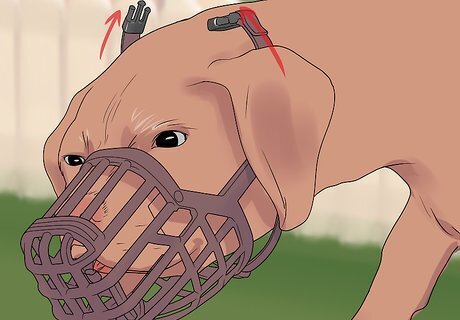
Lift the strap while your dog is eating from the muzzle. Move the strap up slowly with your free hand. Lift it up and put it back down. Don’t fasten the muzzle to their collar yet. For every 5 times you lift the strap, feed your dog a treat through the muzzle.
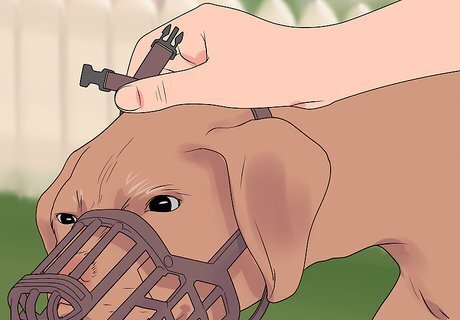
Hold the strap up the entire time your dog eats a treat. Keep the strap up like you’re about to lock the muzzle in place. Watch carefully to see how the dog responds. Keep practicing it until their caution fades. Eventually, they will eat without showing any anxiety about the muzzle. If the dog tries to take the treat and run, don’t chase them or force them back into the muzzle. Switch to a soft treat like peanut butter if you’re using solid food. That way, they need to stay near the muzzle to eat.
Putting on and Taking off the Muzzle
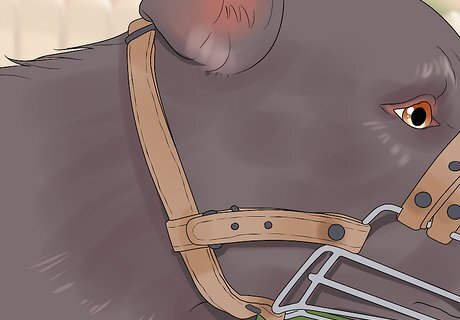
Wrap the strap around your dog’s neck and hold it in place. Act like you’re going to attach the muzzle, but don’t close it yet. Keep watching to see how the dog reacts. Reward them with praise or clicks when they stay in the muzzle. Many dogs will back away when you first put the muzzle on. Don’t chase them or force the muzzle back on. Let them return for the treat in the muzzle when they’re ready.
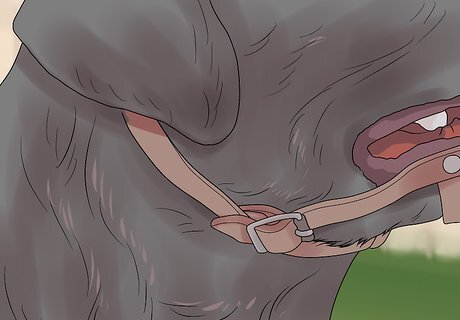
Secure the muzzle’s strap around the dog’s neck. Slide the muzzle onto the dog’s snout, then hook the strap to their collar. Make sure the muzzle fits snugly over the dog’s snout without chafing their skin. If the muzzle seems too restrictive, get a replacement as soon as possible so the training doesn’t go to waste. If your dog still resists, putting a little bit of frozen peanut butter, cream cheese, baby food, or squeezable cheese helps encourage them to check out the muzzle. Use these foods as rewards that are safe to feed your dog while they wear the muzzle.
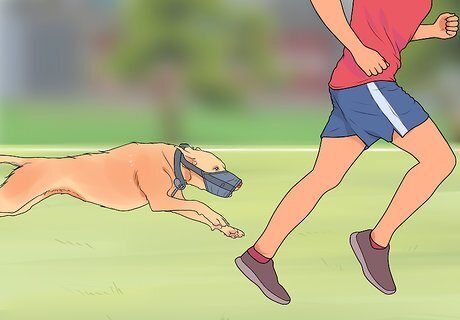
Keep the muzzle on while you do an activity your dog enjoys. The muzzle takes fetch out of the equation, but there are many other ways to have fun with your dog. Try wrestling, chasing, or another activity they normally find entertaining. Play for short periods of time, such as a few minutes at first, to help your dog adapt. Choosing an activity your dog loves is important. It leads them to associate the muzzle with something positive like playing with you. To speed up the training process, play at different times of the day. That way, the dog learns that the muzzle isn’t reserved for a specific time or activity. Motion is distracting, so your dog won't be as focused on the muzzle if they're in the middle of an activity.

Take the muzzle off when your dog seems calm and controlled. If your dog seems anxious to get out of the muzzle, wait. Don’t acknowledge them until they stop whining and fidgeting. When the dog settles down, take off the muzzle. Set the muzzle aside, have fun with your dog, and continue training on another day. Distract a stressed dog with an enjoyable activity or task like telling them to sit or lie down. Consider slowing down and doing more sessions without the muzzle attached to help your dog adjust.
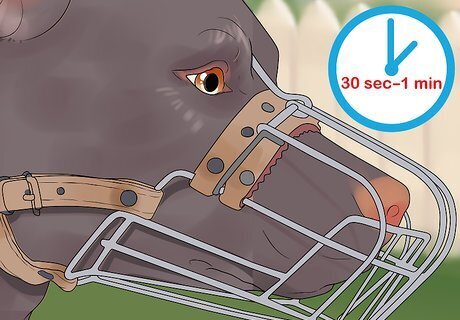
Leave the muzzle on for an extra minute each time your dog wears it. Let your dog wear the muzzle for a short period of time, such as 30 seconds to 1 minute, the first time you use it. As they get more used to the muzzle, increase the duration a little bit more. Eventually, your dog will be able to handle long outings with the muzzle, such as walks and vet appointments. For example, have the dog wear the muzzle for 1 minute, then for 3 minutes, then for 5 minutes. Test your dog by playing or taking them for walks to ensure it is comfortable wearing the muzzle as long as you need it to.
Using a Muzzle After Training

Take your dog outside with the muzzle on. Being outside is like a big test for your dog. All of the sights and sounds going on are distracting even for a well-trained dog. Try taking the dog on a brief walk around the block. Keep the muzzle and leash on the entire time. Going on a walk may be a little stressful for your dog at first. Start out with short walks as needed, then increase the duration.

Socialize your dog with other people and dogs. Muzzling your dog means they cannot nip at anyone that approaches them. If your dog is normally anxious and aggressive, using the muzzle gives you an opportunity to bring your dog to a public area like a dog park. Watch your dog carefully. Permit others to approach as long as your dog seems comfortable with it. Repeated exposure to social settings helps most dogs become calmer and less prone to biting. A muzzle isn’t a cure for behavioral problems. If your dog seems aggressive or anxious, it needs behavioral training to overcome these problems.

Remove the muzzle when you’re done using it. Take the muzzle off as soon as you get your dog home or into another safe spot where it can’t nip anyone. Muzzles are not meant for long-term use, especially if yours is of the fabric variety. Give your dog time to rest and before you need to use the muzzle again. Remember that fabric muzzles are very restrictive and only meant for short trips like vet visits. Most basket muzzles are designed so your dog can pant and drink water, which makes them safe for longer outings like walks and play sessions, but don’t use them longer than you need to.


















Comments
0 comment